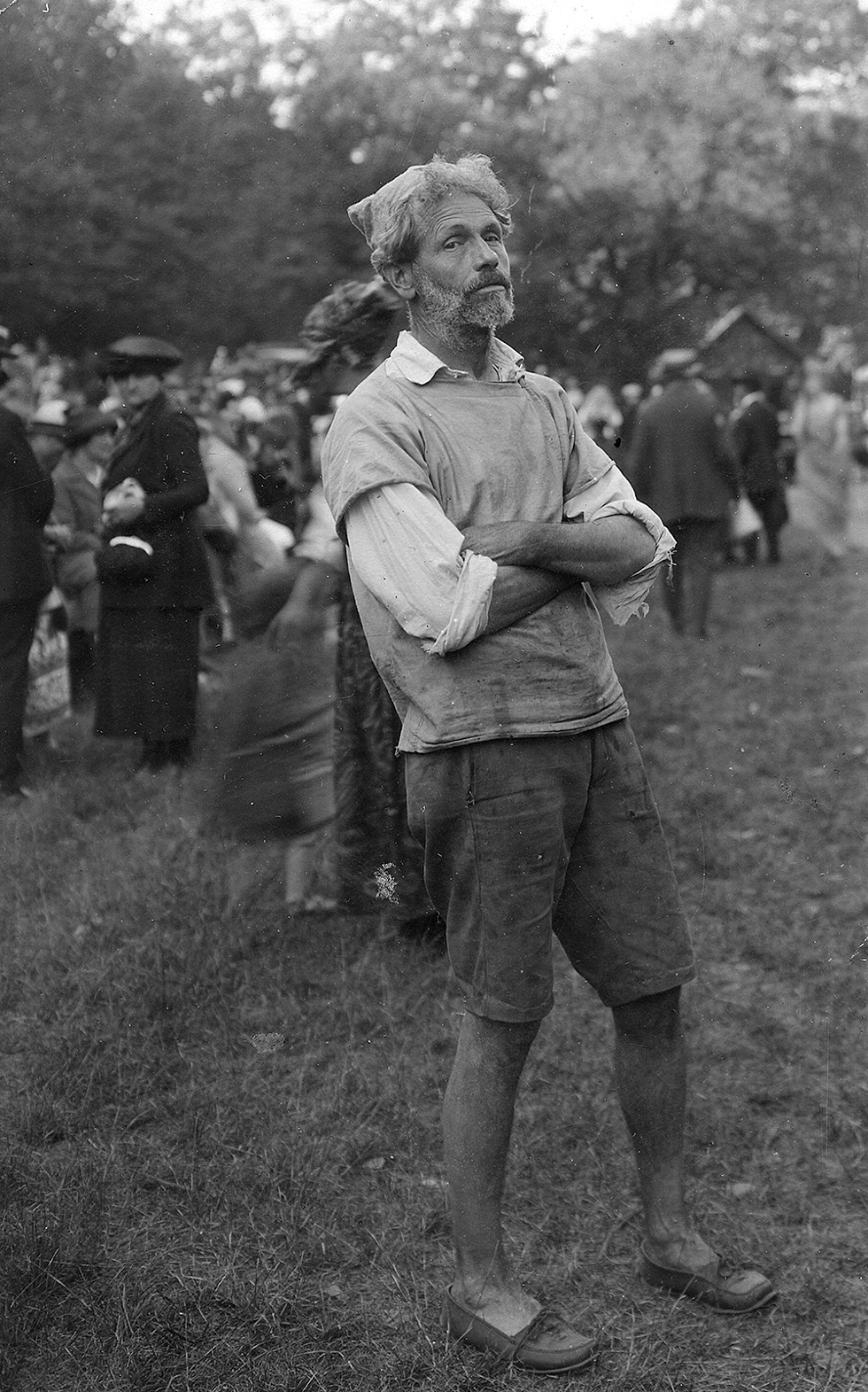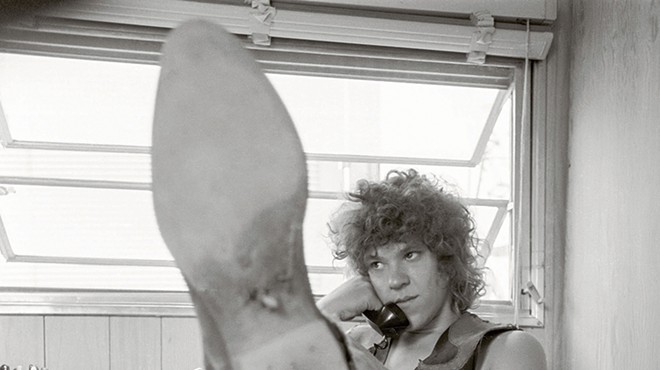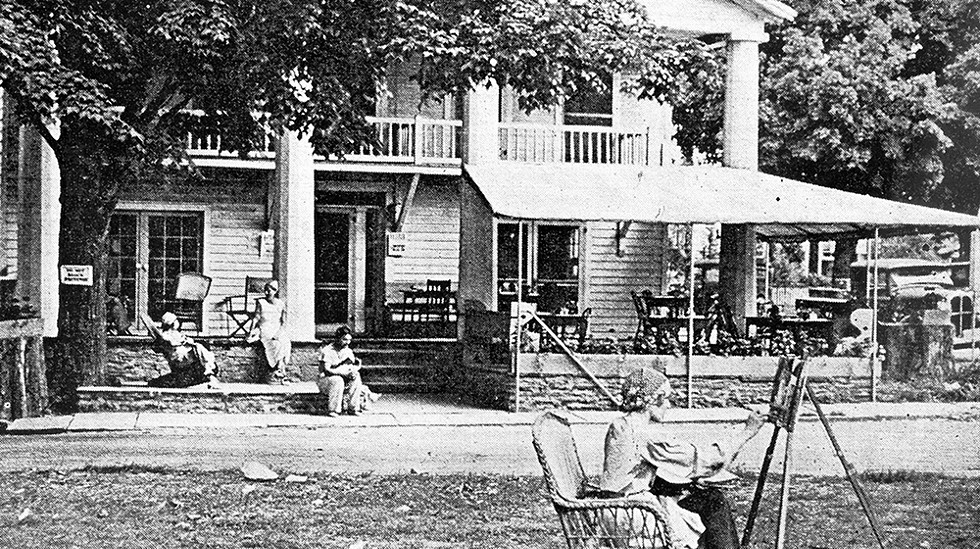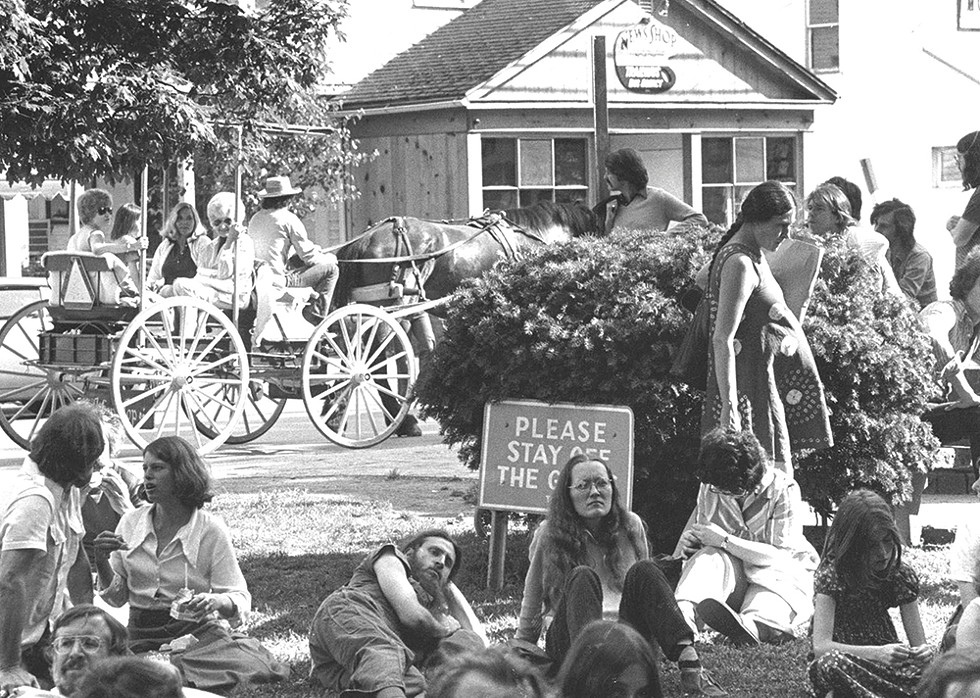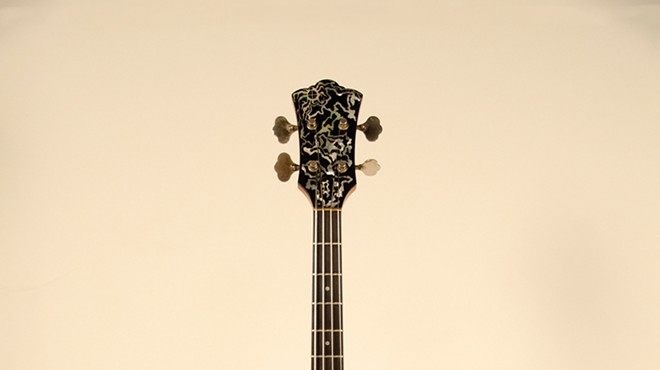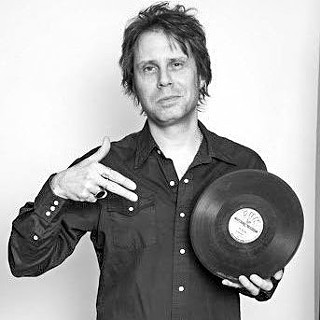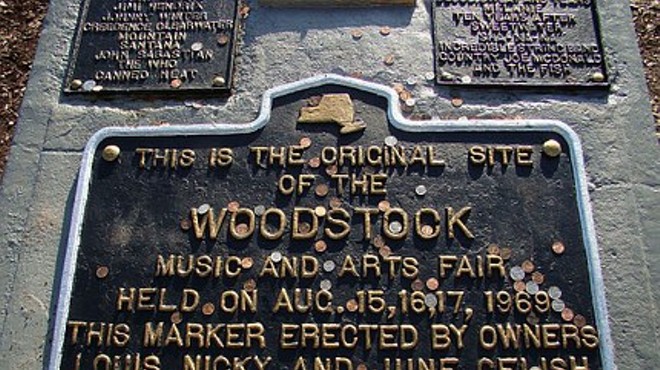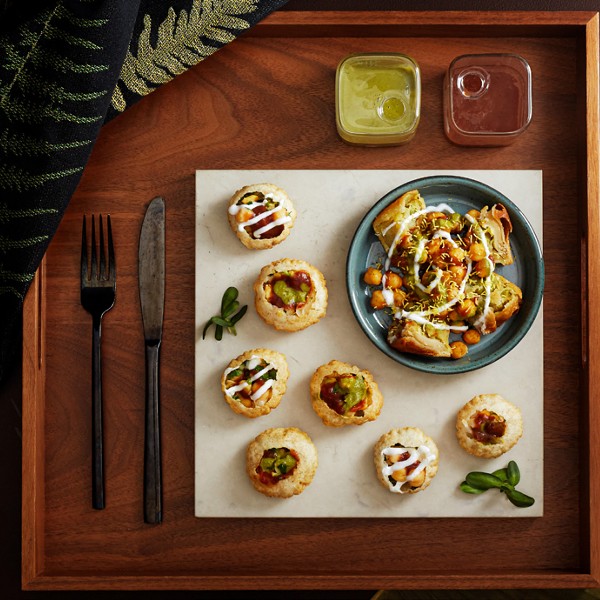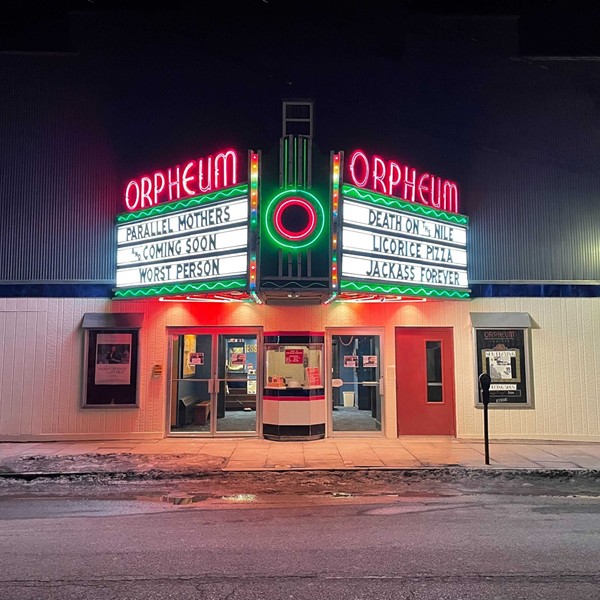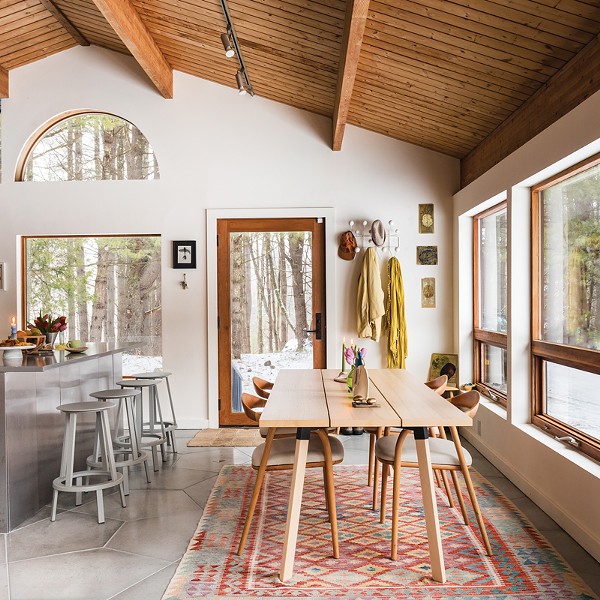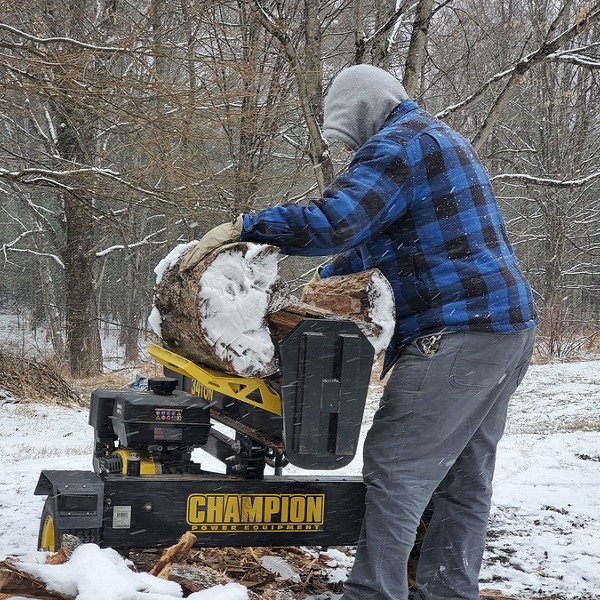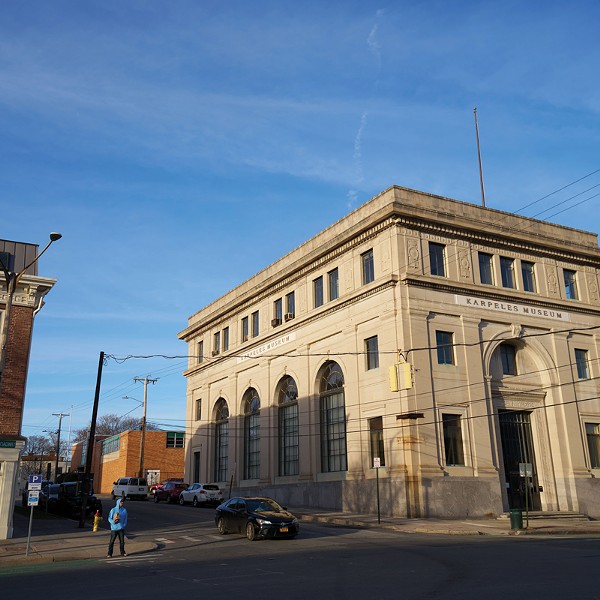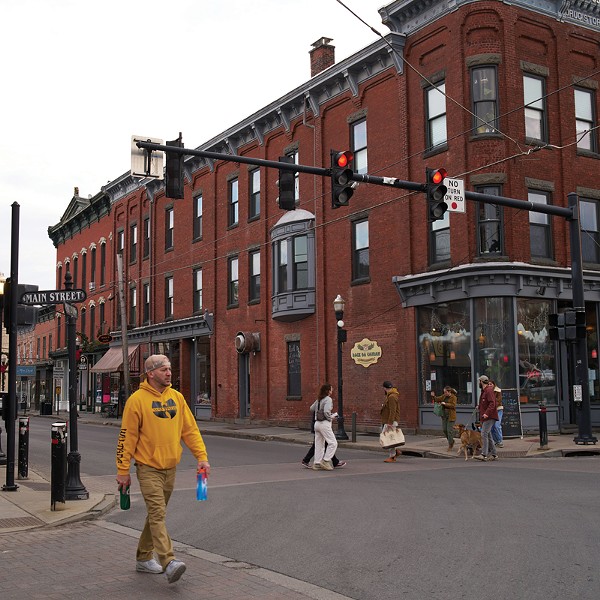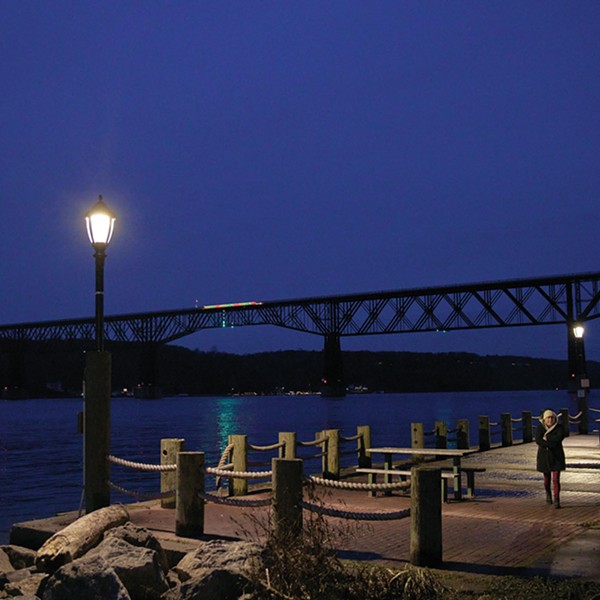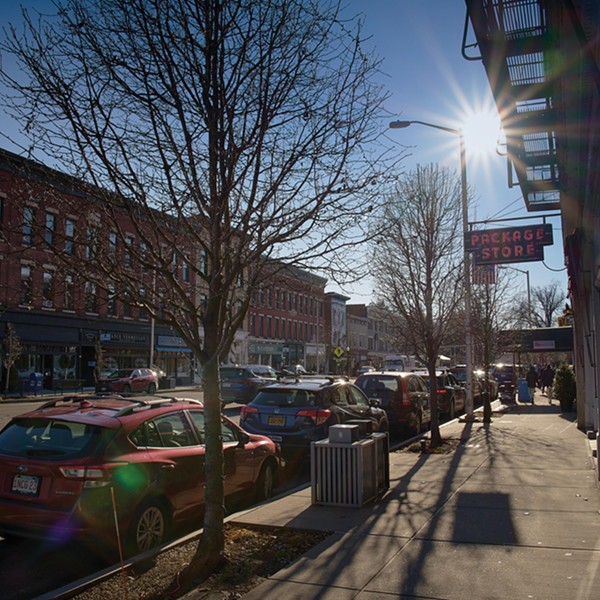With the wooded Overlook Mountain towering above, Cooper Lake to the west, and Echo Lake to the north, Woodstock was incorporated in 1787 as a center for industry.
By the mid-1800s, the area's natural beauty had begun attracting the landscape-obsessed painters of the burgeoning Hudson River School movement, setting an early artistic tone. The breathtaking works created by these painters acted as advertisements for the region, and before long, a growing number of local boarding houses had opened to host summering New Yorkers. Many of these seasonal visitors were artists, stage actors, dancers, musicians, and circus performers who'd come north in search of space and solitude to develop their craft. It was this visiting creative energy that blazed the trail for Woodstock to become the home of two of America's earliest arts colonies.
The Byrdcliffe Colony—still in operation as the nation's oldest artists' colony—was founded in 1902 as a utopian enclave by benefactor Ralph Radcliffe Whitehead, writer Hervey White, and painter Bolton Brown. For more than a century, artists, writers, musicians, and social reformers have made the pilgrimage to Byrdcliffe to stay in the 35 rustic buildings, all designed in the Arts and Crafts style, and create art in the inspirational natural setting.
"The establishment of Byrdcliffe represented the first integration of artists into the town," says Woodstock Town Historian Richard Heppner. "A lot of the locals weren't sure what to make of the artists at first. Ralph Whitehead was instrumental in the process of reaching out to the local population and involving them in what Byrdcliffe was doing." Among the prominent figures who spent time at Byrdcliffe are naturalist John Burroughs, dancer Isadora Duncan, and Bob Dylan, who bought a home there in 1965.
Its rustic facilities are open for tours today and include painting, sculpting, weaving, pottery making, metalworking, and woodworking studios, performing spaces, and artist cottages. Heppner adds, "It's ironic, that you had these local people who made their living off the landscape interacting with these artists who were doing paintings of that same landscape." Some of these painters were the teachers and students who participated in the local summer programs sponsored by the Manhattan-headquartered Art Students League.
After parting ways with Whitehead in 1905, Hervey White and two friends purchased a 90-acre wooded tract just outside of Woodstock, turning it into a gathering ground for artists, intellectuals, writers, and musicians. White named this newly established breakaway arts colony the Maverick, and a collection of ramshackle shacks was built on the property as accommodations. In 1916, White and his crew erected a large timber-frame hall to hold musical performances. Dubbed the Maverick Concert Hall, the majestic, rough-hewn structure is fronted by a wall of diamond-paned windows and still serves as the venue for Maverick Concerts, America's oldest continuous summer chamber music festival. (Inside the hall, John Flanagan's hand-carved 1924 sculpture, the Maverick Horse, graces the stages, a totem for the art colony.)
The series, now in its 103rd year, incorporates jazz, folk, and world music alongside classical styles. The hall's hallowed walls have seen actor and singer Paul Robeson perform and the premier of composer John Cage's controversial 4'33" in 1952. Like Byrdcliffe, the Maverick site is on the National Register of Historic Places.
In 1915, as a means of raising funds to build a well for the commune, White launched the Maverick Festival. Featuring musical and theatrical performances, the festival was held yearly until 1931 and earned a reputation as a boisterous, bacchanalian event attended by thousands of revelers at a time. Prohibition did little to halt the flow of bootleg liquor among the attendees, many of whom were visiting New Yorkers clad in flamboyant costumes and wearing flowers in their hair, attracted by the free-speaking social liberties of the occasion.
"Maverick Festivals became annual occurrences that felt like Old World fairs with a dash of Bohemian sparkle," writes Jill D. Sweet, the daughter of Broadway dancer Barbara Adams Stephens in her memoir, Life as a Tarantella. "Each year the Maverick Festivals became more outlandish and outrageous than the year before." In light of this perfect storm of creativity and relaxed revelry, it's easy to see how the Maverick Festivals greatly shaped the climate that led to the 1969 Woodstock Festival.
Founded by painters John F. Carlson, Frank Swift Chase, Andrew Dasburg, Carl Eric Lindin, and Henry Lee McFee in 1919, the Woodstock Artists Association celebrates its centennial this year. The artists' group was started with the mission of promoting and nurturing the visual arts and arts education in the Woodstock community. Located on Tinker Street in the heart of the village, the museum exists as a repository for the work of artists associated with the original Woodstock arts colonies as well as a gallery space for exhibiting the creations of contemporary local artists. As part of their 100th year celebration, Woodstock Artists Association and Museum (WAAM) will host a retrospective exhibition this fall, displaying rarely seen pieces from their archives and permanent collection.
Woodstock in the 1960s-1980s
When asked about the effect of the Woodstock area on The Band's early period, the quintet's pianist and singer, Richard Manuel, told the Woodstock Times in 1985, "I don't think [the group's early albums] would have happened without it. The environment had a great deal to do with it." Manuel's comments embody a sentiment echoed by many artists and musicians who gravitated to the area in the second half of the 20th century.
When The Band began their run of classic records, including Music from Big Pink, Stage Fright, Cahoots, and Moondog Matinee, music like theirs wasn't really being made outside of Woodstock. It was music that mirrored its surroundings: rustic, downhome, handcrafted, timeless. Music with a mystique that—like the tunes being made by their erstwhile employer Bob Dylan when he was in Woodstock—gave the town the identity on which its namesake festival was based.
The Band was first led to Woodstock by Dylan, who himself was led here by his manager, folk and rock impresario Albert Grossman. Grossman, in turn, had been attracted by the local arts and folk music community. Since 1959, the Cafe Espresso on Tinker Street (now the Center for Photography at Woodstock) had featured visiting folk artists like Joan Baez, Phil Ochs, and Odetta (another Grossman charge), as well as soon-to-be locals like John Herald and Happy and Artie Traum.
Artist Milton Glaser, who later created the famous "I ❤ NY" logo, helped Grossman find a house in the hamlet of Bearsville (the cover of Bob Dylan's 1965 album Bringing it All Back Home depicts Dylan and Grossman's wife Sally in the home's parlor), where over time, the entrepreneur built a nearby compound that included Bearsville Sound Studios, the Bearsville Theater, the offices of his Bearsville Records label, the Bear Café and Little Bear restaurants, and Todd Rundgren's Utopia Soundstage studio (now home to Radio Woodstock). In essence, Grossman was following in the footsteps of Byrdcliffe and Maverick arts colony founders Ralph Whitehead and Hervey White, luring a new generation of artists to the area and playing a crucial role in the development of Woodstock as a music haven.
Bob Dylan began coming up from New York in earnest in 1963, once Grossman was a resident. (When Dylan wasn't staying at his manager's home, he'd sometimes stay and write songs in a room above the Cafe Espresso). Before long, the singer had his own his house in the Byrdcliffe district, where he sought shelter from the storm of his riotous 1965-1966 world tour with The Band, then known as The Hawks.
Dylan withdrew further into the solitude of Woodstock following the 1966 motorcycle accident he had on Glasco Turnpike, and in early 1967 invited The Hawks up from New York to join him in working on new material. A few of the group members rented a house called Big Pink in the neighboring town Saugerties, and there, in the basement, with mostly acoustic instruments, they tried out the newer, quieter songs Dylan was writing and played folk and country tunes for fun. Rough recordings of these sessions would later be bootlegged and commercially released as The Basement Tapes, and today they're hailed as the touchstones of Americana music.
The atmosphere of Woodstock also influenced Dylan's markedly softer and reflective 1967 album, John Wesley Harding. No longer wanting to be known as The Hawks, Dylan's collaborators decided to call themselves what the folks around town were calling them: simply, "the band."
Also woodshedded in Big Pink's basement were songs for The Band's debut album, Music from Big Pink. Released in 1968, the album, with its blend of rootsy, quietly moving songs, stood out from the loud acid rock of the day and offered a respite from a turbulent society—much like Woodstock itself did for its new residents.
As the scene swirled around Dylan and the Band in Woodstock, other artists were drawn to the area. Janis Joplin would frequently stay at her manager Albert Grossman's estate, while Grossman artists Richie Havens and Todd Rundgren became long-term locals. Also making their homes in Woodstock over the years have been Jimi Hendrix, David Bowie, Van Morrison, Bonnie Raitt, Charles Mingus, John Sebastian, Paul Butterfield, Jesse Winchester, Graham Parker, Tim Hardin, Maria Muldaur, Jack DeJohnette, David Johansen, Ed Sanders, Blondie's Chris Stein, and many others.
The Woodstock Sound-Outs, which took place mainly at local gallery owner/deli manager Pan Copeland's farm on the Woodstock-Saugerties border from 1967 to 1970, drew local and international acts for the genial vibe and beautiful setting, helping to inspire the concept for the 1969 Woodstock Festival. The influx of musicians to Woodstock fueled a thriving nightlife scene, with venues like the Sled Hill Café, the Elephant, the Watering Trough, the Village Jug, the Cafe Espresso, and Deanie's restaurant, which was the preferred late-night hang of The Band, Van Morrison, and visiting royalty like George Harrison. Joyous Lake, which presented the likes of Muddy Waters, Talking Heads, and even the Rolling Stones, who were in town rehearsing) constantly hopping with top talent. Remembered for its raucous party scene, living-legend performer-patrons, and the spirit of rock 'n' roll, the mere mention of the place still brings a sparkle to the eye of many Woodstock boomers.
From 1971 to 1984, the Creative Music Studio, cofounded by jazz legend Ornette Coleman and local musicians Karl Berger and Ingrid Sertso, was a premier study center for contemporary creative music and is known as the birthplace of "world jazz" fusion.
And in the world of visual art, the Woodstock School of Art, which was founded in 1906 by the Arts Students League of New York, offered affordable, high-quality instruction to artists of all levels alongside exhibitions of their work, further framing Woodstock as a vibrant center of the arts.
Woodstock: Today and Tomorrow
Today, Woodstock continues to thrive as a vibrant hub of arts, entertainment, business, and community, proud of its legacy and association with the world-famous music festival that shares its name, but at the same time possessing a character all its own—one that infuses the creative climate of its legacy with a fresh, contemporary edge and a shared sense of caring community for residents and visitors alike.
Fanning out from the idyllic village green in the heart of the town are Woodstock's main thoroughfares of Tinker Street, Mill Hill Road, and Rock City Road. Each is lined for blocks with distinctive, appealing shops and other businesses catering to year-round residents, weekenders, and tourists.
"Sixty percent of the people here are second-home owners," says Woodstock Town Historian Richard Heppner. "Going back to the beginnings of the Byrdcliffe and Maverick art colonies, then with the musicians in the '60s and '70s, it's always been the artists who've brought new life into Woodstock. And since 9/11 there's been a new wave of artists coming to town. It's more active now than it's been in a long time."
Consistent with its outsized artistic tradition, Woodstock boasts a remarkable concentration of art galleries and museums for a town of such modest scale. Among the most prominent are the Woodstock Artists Association Museum (WAAM), which was founded in 1919 expressly to collect and exhibit the work of local artists and celebrates its 100th anniversary this year; the Kleinert/James Center for the Arts, which is operated by the historic Woodstock Byrdcliffe Guild; the Center for Photography at Woodstock, in existence since 1977; Woodstock School of Art, which offers exhibitions of local and regional artists; the Fletcher Gallery, which specializes in noted artists circa 1900 to 1950; the James Cox Gallery, in nearby Willow; and the Elena Zang Gallery in the hamlet of Shady.
Near the town center is the Woodstock Artists Cemetery, where The Band members Levon Helm and Rick Danko are among those buried. Located on the beautiful Comeau Property (open to the public for hiking), the Historical Society of Woodstock is home to changing exhibits and archives relating to the area.
The shops here embody the balance of old-Woodstock charm and new-Woodstock dynamism. Venerated mainstays—like town staple H. Houst & Son Hardware (established in 1932), candle emporium Candlestock (1970), cosmetics and beauty supplier Jean Turmo (1976), Catskill Art Supply and legendary bookstore The Golden Notebook (both 1978)—remain open alongside popular newer retailers like Overlook Bicycles, Pegasus Footwear, Lotus Fine Art & Design, and Woodstock Music Shop. Specialist stores like Mirabai, Tibetan Arts & Crafts, Pondicherry, Dharmaware, and Gryphon Gem & Crystal Shop reflect the meditative and spiritual focus equated with the "Woodstock Generation," while natural food markets Sunflower and Sunfrost offer healthy sustenance consistent with the town's back-to-the-land ethos. Celebrating its 42nd continuous season in 2019 is Mower's Market, a weekly flea market open on Saturdays and Sundays from May to November, and Wednesdays in July and August.
With its formidable variety of world-class restaurants, Woodstock is one of the Hudson Valley's premier dining destinations, and its deliciously diverse wealth of culinary options parallels the town's creative soul. Recent additions to the gustatory landscape like Silvia (in the former location of Joyous Lake), Shindig, Early Terrible Wine Bar, Provisions, A&P Bar, and the revamped Woodstock Pub have each brought bold new colors to the regional palate. Fervent foodies also flock to more established eateries like the upscale Cucina, the vegan Garden Café, Yum Yum Noodle Shop, Oriole 9, Taco Juan's, Bread Alone, and Catskill Mountain Pizza, which often hosts live music.
Provisions, a rustic restaurant serving up comfort food in a streamside setting, also runs The Table at Woodstock out of a local church, offering no-cost, prepared food to underserved community members three nights a week, embodying the culture of neighborly sharing that has come to be the town's calling card.
"Woodstock's not just 'the place where the festival didn't happen.' There was a creative spirit in Woodstock long before that. And it's still here."
tweet this
Live music is, of course, an inseparable aspect of Woodstock life, and there are several venues that regularly rock with national and local performers. Colony (formerly the Colony Cafe, established in 1929) serves tasty food and features rising indie and legendary acts ranging from Darlene Love to the Meat Puppets. Levon Helm Studios, known affectionately as "the Barn," was home to the late The Band drummer and now, as a venue, pulls in audiences from around the world for its magical Midnight Ramble sessions, which have seen the likes of Elvis Costello, Emmylou Harris, and other big names in its intimate space.
Another frequent concert site is the Woodstock Playhouse, which was built in 1938 and has presented theatrical productions starring Lillian Gish, Karl Malden, fan dancer Sally Rand, Diane Keaton, local legends Lee Marvin and Chevy Chase, and others. Rebuilt after a fire in 1988, it continues its main mission of staging plays and musicals.
Each fall sees the return of the Woodstock Film Festival, one of the country's leading independent film events. Centered in Woodstock, the four-day festival presents high-quality indie films and celebrity panels and workshops in town and in nearby Rosendale, Saugerties, Kingston, and Rhinebeck. For great films year-round, there's Upstate Films, a non-profit, member-supported cinema that screens a diverse range of newly released, indie, and classic movies.
The Obie Award-winning arts organization the Secret City, which set up shop near the Byrdcliffe Guild, presents ecstatic community celebrations of everyday creative life, and bills itself as part ceremony, part salon, and part show. Each event has a different theme and an ever-changing roster of artists and performers, harkening back to the carnival-like, early 20th-century Maverick festivals that first drew artists to Woodstock and set the tone for the town.
In addition to its thriving culture and natural beauty, what attracts so many people to Woodstock—and makes them feel so at home there—is the deep sense of mutual support and compassion found among its residents and business owners. Radiating through the quaint village are the same welcoming undercurrents of love and human connection that have defined it since well before 1969—and in turn set the tone for the namesake festival.
Today, those values come shining through in the way shopkeepers and restaurant workers greet each other at the Wednesday market, spend time getting to know their customers in order to give them the best experience, and support local nonprofits like Family of Woodstock, which was founded in 1970 and has grown to be one of Ulster County's main social services providers.
"Woodstock's not just 'the place where the festival didn't happen'," says Richard Heppner. "There was a creative spirit in Woodstock long before that. And it's still here."







